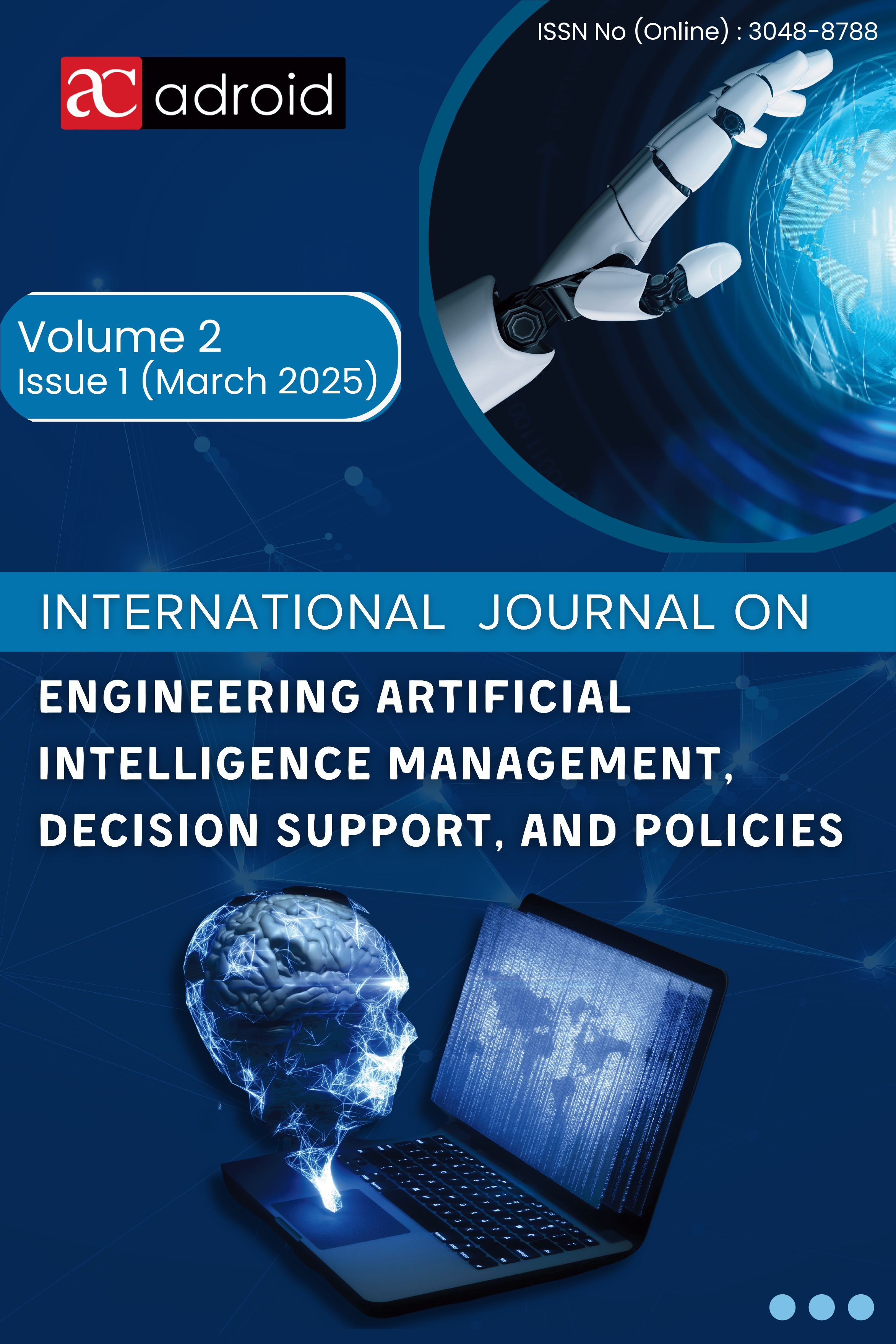Comprehensive Framework for the Detec tion and identification of Android malware using Deep Learning
DOI:
https://doi.org/10.63503/j.ijaimd.2025.40Keywords:
Android malware, deep learning, CNN, RNN, malware detection, machine learning, Android securityAbstract
Android malware is a great concern to mobile devices since it compromises the security of users and their privacy. Due to the high variability and sophistication of contemporary malicious applications, advanced approaches to detect and rec ognize threats are needed. Before discussing the proposed work, let us look at the related studies Briefly, the following is the summary of this paper. Dynamic and static features of the applications are used, and two deep learning models, namely, a Convolutional Neural Network (CNN) and a Recurrent Neural Network (RNN), are used for further classification. The models are fine-tuned and trained using a synthetic dataset of Android applications’ features including permissions, API calls, behavior characteristics, etc. Following that we evaluate these two models for their accuracy, precision, recall, and computational time. A compari son of the results shows that the CNN model has better performance in feature extraction while the RNN model has done better in modeling sequence patterns. The combination of deep learning with feature engineering shows promising ben efits in the application of real-time malware identification systems.
References
[1]. R. Vashistha, D. Yadav, D. Chhabra, and P. Shukla, “Artificial intelligence integration for neurodegenerative disorders,” Academic Press, pp. 77-89, 2019.
[2]. Z. Yuan, Y. Lu, and Y. Xue, “Droiddetector: android malware characterization and detection using deep learning”, Tsinghua Science and Technology, Vol. 21, No. 1, pp. 114-123, 2016.
[3]. P. Musikawan, Y. Kongsorot, I. You, and C. So-In, “An enhanced deep learning neural network for the detection and identification of android malware”, IEEE Internet of Things Journal, Vol. 10, No. 10, pp. 8560-8577, 2022.
[4]. Z. Wang, J. Cai, S. Cheng, and W. Li, “DroidDeepLearner: Identifying Android malware using deep learning,” 2016 IEEE 37th Sarnoff Symposium, USA, 2016, pp. 160-165.
[5]. O. N. Elayan and A. M. Mustafa, “Android malware detection using deep learning,” Procedia Computer Science, Vol. 184, pp. 847-852, 2021.
[6]. D. Agarwal, “Energy Consumption Forecasting in Smart Cities Using Predictive Analysis,” International Journal on Engineering Artificial Intelligence Management, Decision Support, and Policies, Vol. 1, No. 2, pp. 9-17, 2024.
[7]. H. E. Fiky, A. E. Shenawy, and M. A. Madkour, “Android malware category and family detection and identification using machine learning,” arXiv preprint arXiv:2107.01927, 2021.
[8]. R. Vinayakumar, K. P. Soman, and P. Poornachandran, “Deep android malware detection and classification,” 2017 International Conference on Advances in Computing, Communications and Informatics (ICACCI), India, 2017, pp. 1677-1683.
[9]. Naway and Y. Li, “Using deep neural network for Android malware detection,” arXiv preprint arXiv:1904.00736, 2019.
[10]. D. Aggarwal, “Predictive Analysis for Environmental Risk Assessment in Coastal Regions,” International Journal on Computational Modelling Applications, Vol. 1, No. 2, pp. 35-49, 2024.
[11]. P. Zegzhda, D. Zegzhda, E. Pavlenko, and G. Ignatev, “Applying deep learning techniques for Android malware detection,” Proceedings of the 11th International Conference on Security of Information and Networks, 2018, pp. 1-8.
[12]. Mohanty, A. G. Mohapatra, S. K. Mohanty, and A. Mohanty, “Fuzzy Systems for Multicriteria Optimization: Applications in Engineering Design,” CRC Press, pp. 4-46, 2025.
[13]. Z. Yuan, Y. Lu, Z. Wang, and Y. Xue, “Droid-sec: deep learning in android malware detection,” Proceedings of the 2014 ACM Conference on SIGCOMM, 2014, pp. 371-372.
[14]. P. Singh, “Sorting and Path Finding Algorithm Visualizer,” International Journal on Smart & Sustainable Intelligent Computing, Vol. 1, No. 2, pp. 40-48, 2024.
[15]. K. Bakour and H. M. Ünver, “DeepVisDroid: android malware detection by hybridizing image-based features with deep learning techniques,” Neural Computing and Applications, Vol. 33, No. 18, pp. 11499-11516, 2021.
[16]. E. B. Karbab, M. Debbabi, A. Derhab, and D. Mouheb, “Android malware detection using deep learning on API method sequences,” arXiv preprint arXiv:1712.08996, 2017.
[17]. J. Sahs and L. Khan, “A machine learning approach to android malware detection,” 2012 European Intelligence and Security Informatics Conference, 2012, pp. 141-147.
[18]. M. İbrahim, B. Issa, and M. B. Jasser, “A method for automatic android malware detection based on static analysis and deep learning,” IEEE Access, Vol. 10, pp. 117334-117352, 2022.
[19]. J. Senanayake, H. Kalutarage, and M. O. Al-Kadri, “Android mobile malware detection using machine learning: A systematic review,” Electronics, Vol. 10, No. 13, pp. 1606, 2021.
[20]. D. Zhu, H. Jin, Y. Yang, D. Wu, and W. Chen, “DeepFlow: Deep learning-based malware detection by mining Android application for abnormal usage of sensitive data,” 2017 IEEE Symposium on Computers and Communications (ISCC), 2017, pp. 438-443.

